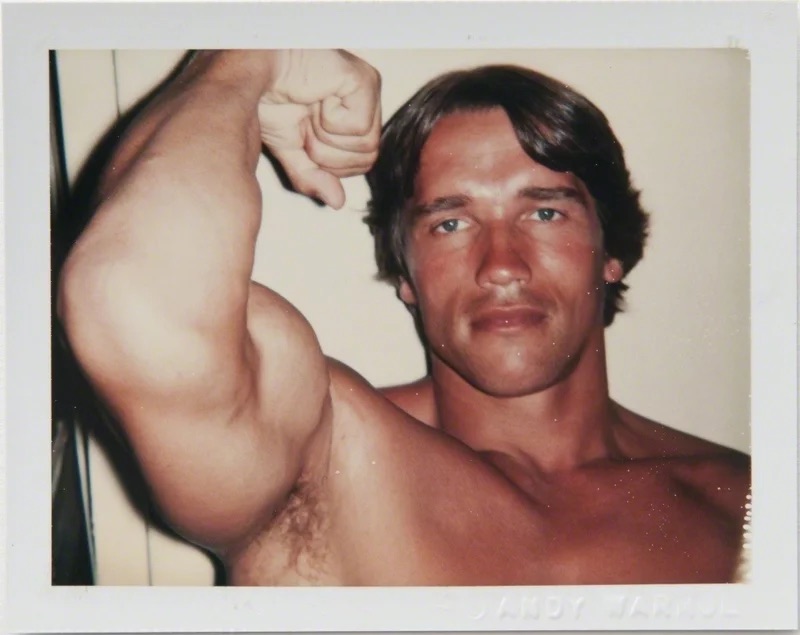While Andy Warhol is widely recognized for his groundbreaking contributions to modern art, his vibrant social life also played a significant part in establishing his legacy. The artist was at the center of an extensive and diverse social circle in New York. The nightlife scene was filled with artists who delved into little bits of everything – acting, film directing, painting, writing, modeling, making music, and more. These rising stars partied at Andy’s Factory before and after the career-defining moments that made them famous.
The Factory, Andy’s legendary studio, played a key role in forming and maintaining this social circle as well as influencing the cultural landscape of the time. With four different locations between 1963 and 1987, the Factory attracted a host of famous personalities from various industries. Some regular visitors included Mick Jagger, Grace Jones, Debbie Harry, Liza Minnelli, and Truman Capote. These interactions often inspired different areas of Warhol’s work and fed into the unique atmosphere of his gathering place. The Factory was a home for collaborative creativity, raw talent, and artistic innovation where iconic works and identities were born.
In this July newsletter, we’ll highlight ten of Andy Warhol’s most fascinating friends. These individuals made unique contributions to art and culture, in movies, music, visual art, and fashion, and many of them inspired and appeared in Warhol’s artwork. Each of them took part in shaping an era committed to stretching the boundaries of innovation, rebellion, and unrivaled creativity. Read on to explore the lives and legacies of these remarkable individuals.
Mick Jagger
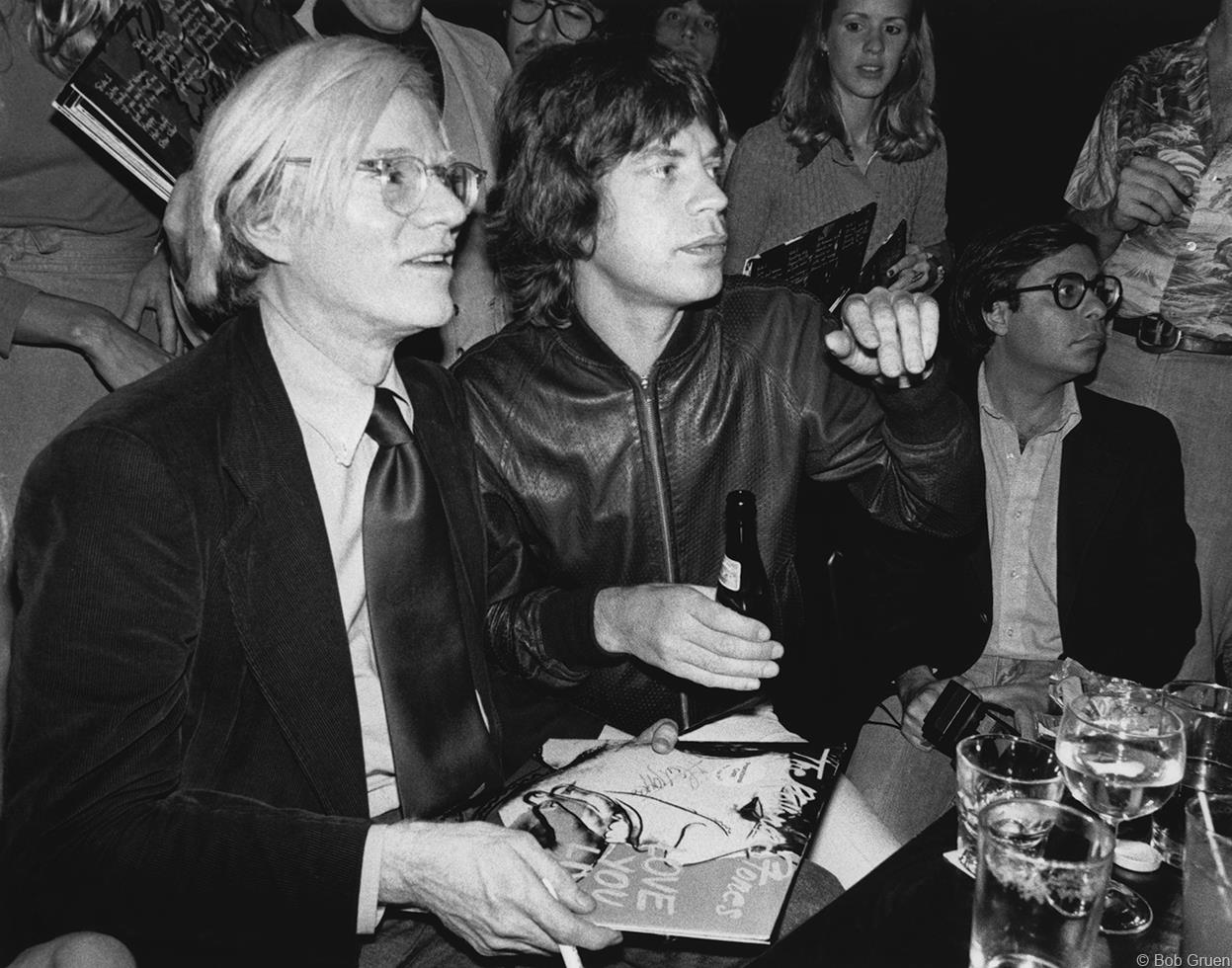
Andy Warhol and Mick Jagger were both leading figures in their respective artistic realms: Pop Art and rock music. Throughout the 60s and 70s, music and art were becoming interconnected in new ways, and it was inevitable that this pair would meet. In the 1960s, The Rolling Stones, led by Jagger as their frontman, were on the rise to become one of the most influential rock bands of all time in the 60s. The Factory being a cultural point for celebrities, artists, musicians, and actors of the time, Jagger was drawn like a magnet to the innovation and creativity that Warhol portrayed through his unique identity and approach to art. The two met in New York in 1963 at a party celebrating The Rolling Stones’ first official tour in the U.S. At the time, the band was not very well known throughout the country, but Andy had an uncanny talent for recognizing, capturing, and even creating rising icons.
Warhol and Jagger’s professional collaborations developed through the 1970s as both individuals rose to fame in the art and music industries. Their first notable project was the 1971 cover for Rolling Stones’ album Sticky Fingers. This was a perfect opportunity for the pair to collaborate artistically given Warhol’s utmost fascination with the human body and the band’s foundational sex and rock n’ roll stage presence. The controversial album cover resulting from this collaboration shocked the public and is widely credited with driving its groundbreaking sales. It featured a close-up shot of Joe Dallesandro’s crotch in tight Levi’s jeans, and a real zipper. Warhol was a genius in creating and understanding the interactions between advertising and art. He recognized the importance of public image and helped Mick Jagger and his band solidify their rock n’ roll identity.
Later in 1975 while both artists were reaching new heights in their careers, Andy created the Mick Jagger series. These portraits display elements of Andy’s artistic exploration with features like thick blocks of color and sketched-out lines alongside Mick Jagger’s face. The artist also developed a friendship with Jagger’s wife Bianca while the couple rented his summer Long Island home in ‘75. As the trio spent much time together, it was here where Andy shot Polaroid photos of the musician for his ten-screenprint series. In this period, Warhol started to explore new artistic styles by moving away from using existing photographs of well-known figures in his portraits. Instead, he began to take on the role of photographer himself, capturing his subjects through his own lens.
The artistic collaborations between these close friends have left us with visible proof of Jagger’s significant and distinctive personality, achieved through innovative fusions of rock and roll and art. This mix of artistic genres was not limited to Andy’s work with Mick Jagger. The vibrant nightlife of New York City during this era was buzzing with activity, and it wasn’t long before Warhol found another rising star in the rock and roll industry: Debbie Harry.
Debbie Harry
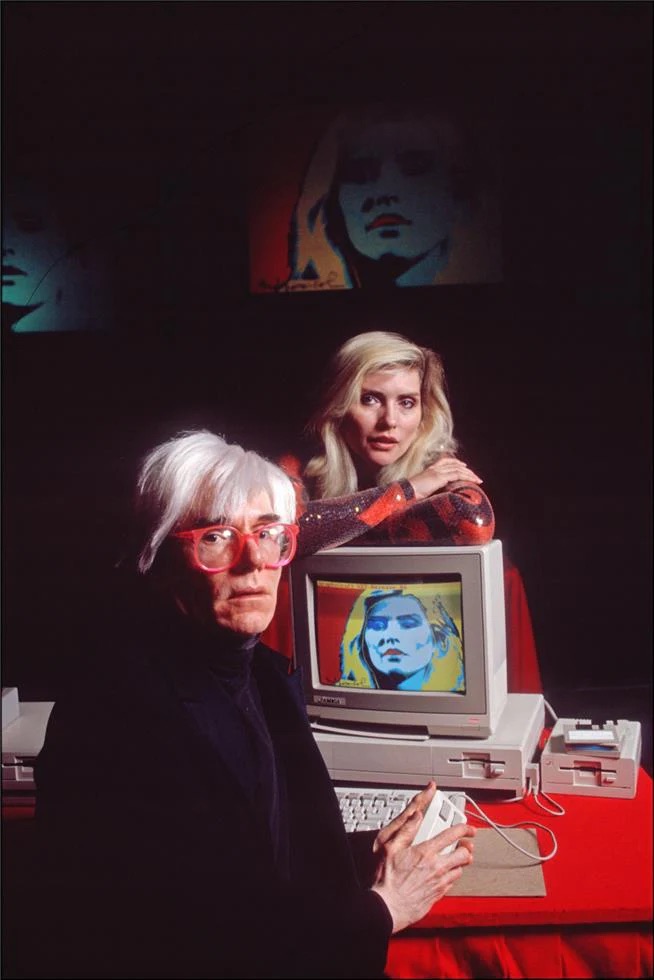
Debbie Harry, known for her iconic role as the frontwoman of Blondie, was a central figure in the 1970s punk rock wave flooding the streets of New York. Warhol and Harry first met while she was waiting tables at Max’s Kansas City, a popular nightclub and hotspot for rising artists of the time. According to her 2019 memoir Face It, Debbie Harry and Chris Stein, her bandmate and lover, were frequently invited to parties and dinners with the artist. Harry attended parties at Warhol’s Factory on Union Square and shared in her memoir how Andy would invite “all kinds of people from all kinds of backgrounds, uptown, downtown, artists, socialites, eccentrics, you name it.” The two shared a connection in their appreciation for avant-garde expression, exploring new ways to blend components of music with art.
After Blondie’s single “Heart of Glass” hit the top of the Billboard Hot 100 chart, Andy put Harry on the cover of Interview magazine’s June 1979 issue and organized a celebration for the band at the Studio 54 nightclub. In her memoir, Harry remarked, “His curiosity was endless. He was also extremely supportive of new artists. Chris and I adored Andy. And to find out that he was a fan of ours was heavenly.”
When Blondie reached a point in their blossoming career to take a break from touring, Debbie took the opportunity to have her portraits made by Andy. In her memoir, she shared that Andy had said, “If he could have anyone else’s face in the world, it would be mine.” The idea of the portrait series being used for an album cover was tossed around, but Andy’s work was not officially featured until 2014 when the Blondie’s Greatest Hits Deluxe Redux album was released. All sides of the record cover display Debbie’s gorgeous and bold portrait with Warhol’s expert application of bold pink and yellow hues.
Debbie Harry and Andy Warhol maintained a close and enduring friendship throughout the years. Harry and her then-partner, Chris Stein, often sought unique collectibles that would delight Warhol. One such treasure was a camera from the early 1970s. Harry recounts, “We’d find them in junk stores at around twenty-five cents a pop. He’d always be very grateful.” This is one of many anecdotes highlighting the mutual affection and shared appreciation for art and creativity that defined their relationship.
In the summer of 1985, Warhol requested Harry’s modeling assistance for an innovative collaborative project with the Amiga computer. To promote the graphic design abilities of this new computer system, Warhol took photos of Debbie and manipulated them. These digital artworks, reminiscent of his famous Debbie Harry portraits, were created live during a demonstration at the Lincoln Center. Throughout the 1970s and 80s, Andy’s innovative and artistic journey proved to lead him to other stars with fame of global potential, such as the legendary Grace Jones.
Grace Jones
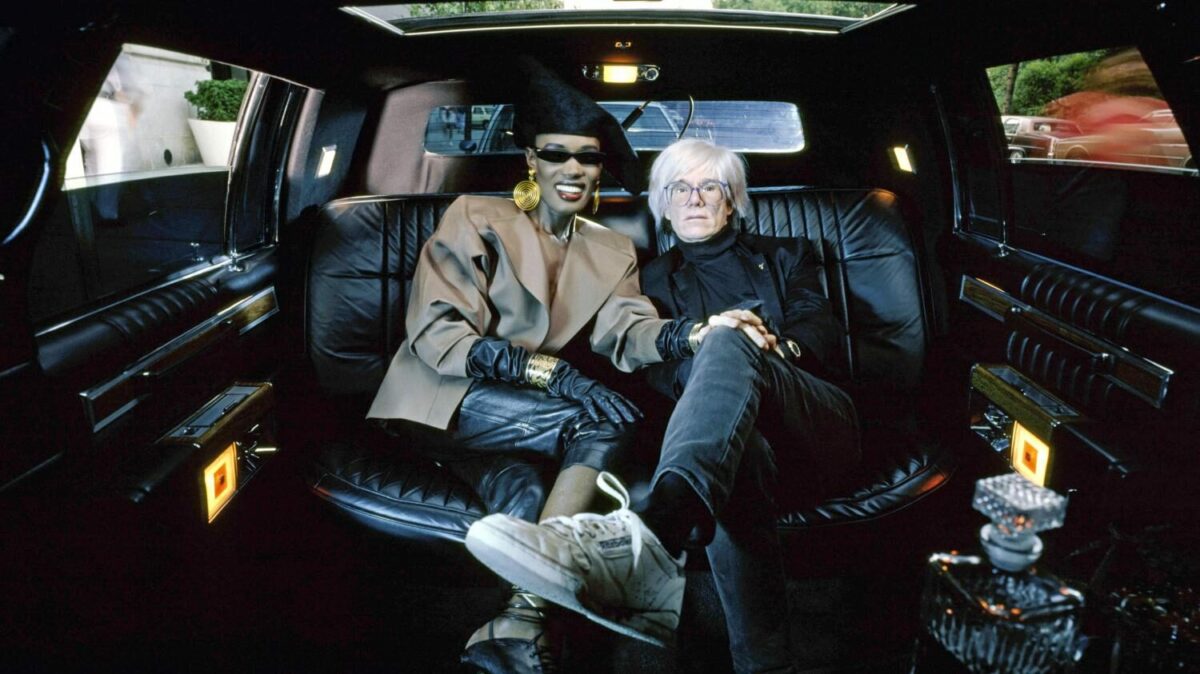
Grace Jones, a famous Jamaican American singer, actress, and model is well known for her fearless approach to individuality throughout the 1970s and 80s. Her electrifying androgynous presence fit with bold and bright fashion pieces quickly made her a cultural sensation across the worlds of music, art, and fashion. After first meeting at some point in the mid-70s through mutual connections, Warhol and Jones shared more than just a friendship. As artists, they worked creativity together to embody each other’s innovative ideas and visions and redefine societal boundaries placed on art and fashion. Though neither of the two had a recollection of when they first met, Grace Jones shared in her memoir, “One minute you don’t know him and then you do.”
Aside from introducing the model to famous artists such as Keith Haring, Warhol and Jones have left a lasting legacy of artistic collaborations and photographed experiences. In July 1984, Vogue commissioned Andy Warhol to create portraits of Grace. Perhaps one of the most telling stories about Warhol and Jones’ friendship took place on the day of this scheduled photoshoot. After waiting for Grace’s arrival, Warhol was frantically attempting to track her down. An assistant then discovered her to be at a department store collecting all of her furs from storage. Warhol personally thought that jewelry would be fitting for the Vogue photoshoot, but the vivid furs were evidently worn by Jones instead.
Warhol wanted nothing more than for Grace to be at the peak of stardom. On her Facebook page in 2012 long after Warhol’s passing, Jones shared, “What Andy Warhol did was make it possible for artists to make money while they were still alive. This was his genius. He was very generous with me. That whole lot just loved doing art, you know — it was more about that. Creating.” This speaks volumes about Warhol as a personal friend. Andy’s passion for creating alongside his friend is evident in his 1986 portraits of the androgynous model, where nine images of Grace were formatted into a striking grid pattern. Silkscreen prints of Grace were produced by Warhol in the same year featuring vivid tones of red and yellow.
Their friendship extended beyond the art world and into socialite circles, as they attended Arnold Schwarzeneggar’s wedding to Maria Shriver together that same year. According to Warhol’s diary, he was unaware that Jones had planned to be his date for the event until he read a piece about it in the newspaper. On the wedding day, Warhol and Jones made a dramatic entrance, arriving “fashionably” late. Grace describes the scene in her memoir: they creaked through the main door, with Andy linked arm-in-arm, just in time to catch the final moments of Arnold and Maria’s ceremony, who did not look pleased with them. This anecdote not only highlights the uniqueness and lack of fragility that characterized this friendship, but also serves as a segue to the next notable figure in Warhol’s circle – the groom of the wedding himself, the Austrian Oak. Jones, who had a supporting role in Conan the Destroyer alongside Schwarzenegger, provides a unique connection between these two iconic personalities.
Arnold Schwarzeneggar
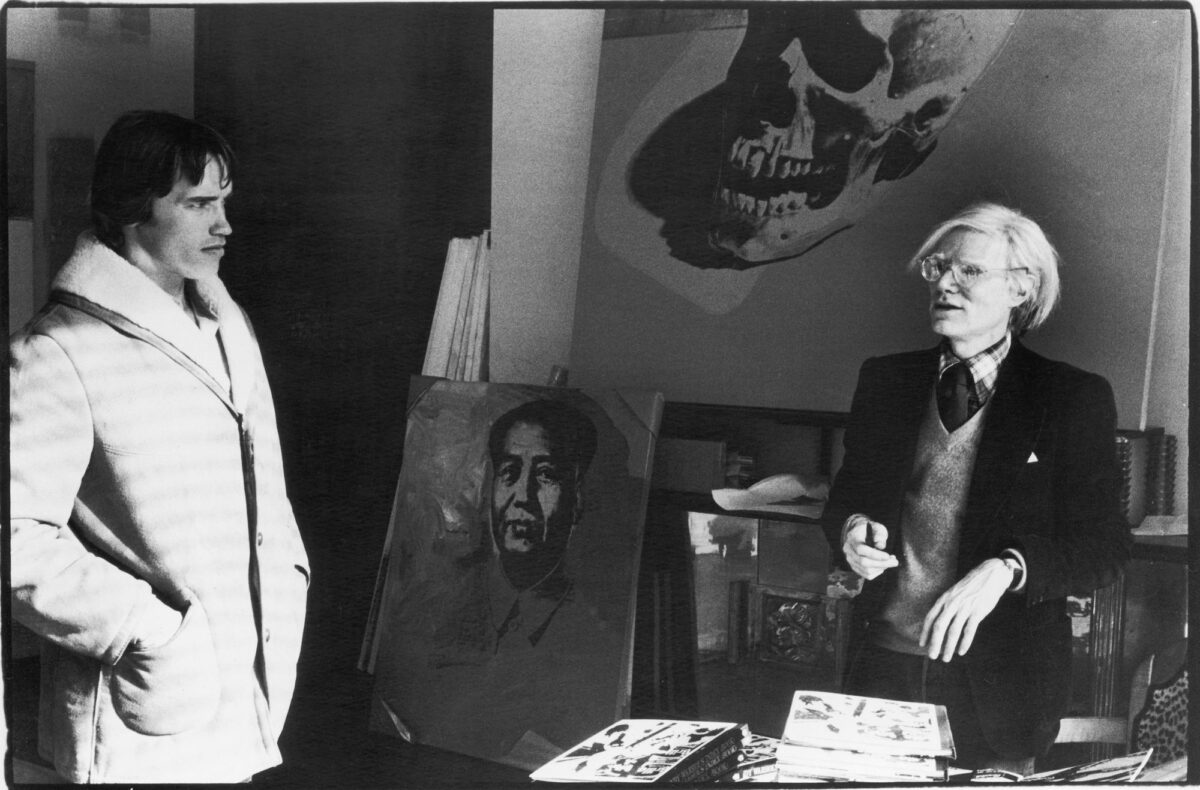
Before Arnold Schwarzenegger became a Hollywood star, he was an aspiring bodybuilder with ambitious dreams of fame. His lead role in the 1977 docudrama Pumping Iron, following his title as Mr. Olympia, propelled him into the spotlight and facilitated connections with other rising artists, actors, and athletes. Warhol and Schwarzenegger first met at Elaine’s, a renowned New York restaurant and hangout spot for local socialites. Schwarzenegger recalls their initial interaction in his memoirs: Warhol was full of curiosity about Arnold’s involvement in the Whitney Museum of American Art’s event titled American Muscle: The Male Body as Art.
This live exhibition featured Schwarzenegger and two other bodybuilders posing on stage to promote funding for the completion of the Pumping Iron documentary. Warhol, fascinated by the concept, asked Arnold, “How can you look like a piece of art? How can you be the sculptor of your own body?” This highlights Warhol’s fascination with the intersection of art and physicality, envisioning bodybuilding as a form of sculptural artistry through Schwarzenegger’s expertly crafted physique. This interaction marked the beginning of a unique friendship. The physical contrast between the fey artist and the towering bodybuilder was striking, reminiscent of the contrasts that became a signature of Schwarzenegger’s buddy films like Twins (1988) with Danny De Vito. Arnold hung around The Factory frequently after they met, simply enjoying being involved in artistic activity. He could be seen from the streets of Union Square posing for Warhol with his Polaroid camera. These shots are part of Warhol’s iconic collection of celebrity photos.
Warhol wanted to help the bodybuilder achieve his life goals by starting an acting career in Hollywood. This is illustrated in his 1976 issue of Interview magazine where the artist depicts Arnold as a perfect match for the cinematic role of Superman. In Arnold’s memoir Total Recall, he describes a day at The Factory in 1977 when Andy invited him to witness a photographic process that ultimately became his artwork series, Sex Parts. Arnold watched as twelve men undressed for the shoot and arranged themselves on a long table, following Andy’s instructions. The artist manipulated the positions and angles of their bodies to appear as abstract shapes in a Polaroid shot. In his memoir, he recalls, “They didn’t look like people, just shapes. I said to myself, ‘This is unbelievable, this guy is turning asses into rolling hills.’”
Schwarzenegger knew what he wanted for his life from an early age and Warhol saw this ambition in the young star. Arnold explains in his memoir that observing Andy and his work ethic helped him pave the way for his future career plans. The pair often discussed the “wrong thing, right space” theory which posits that avant-garde art can thrive if presented in the proper context. This theory clearly resonated with Schwarzenegger as he applied this concept to his diverse career paths, including bodybuilding, acting, and later, politics. In 1986, Andy’s wedding gift to Schwarzenegger was a painted portrait of his bride-to-be, Maria Shriver. Andy saw the drive for innovation in other creators, including one notable designer in his social circle, Halston, who notably assisted him in finding models for the aforementioned Sex Parts photo series.
Halston
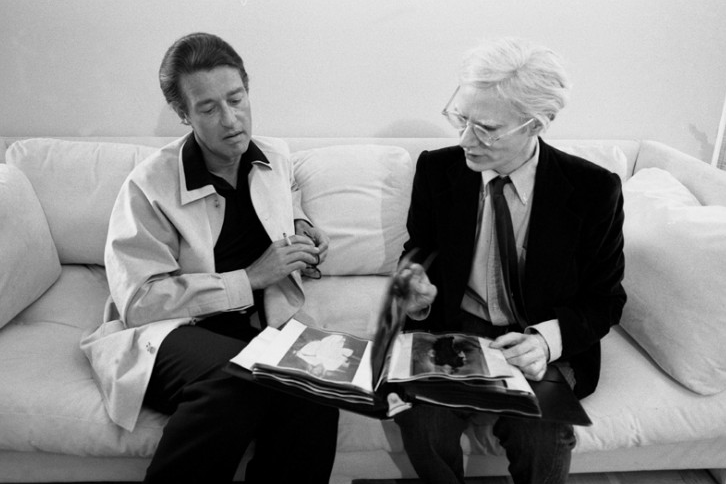
In the 1960s Halston and Andy Warhol became acquainted through mutual friends, but they did not professionally collaborate until the 1970s. Though they sat at the heads of different industries, Warhol and Halston both embraced the appeal of mass production and celebrity. The fashion designer and the pop artist shared a keen understanding of the role that identity and celebrity play a role in American culture. Warhol and Halston had very similar upbringings and career paths, both growing up with big dreams in working-class environments and gaining recognition in New York during the sixties. Halston launched his first clothing brand in 1966, and Warhol could be seen wearing items from Halston’s fashion line, which became instantly popular due to its modernity and solid fabrics.
In his diary, Andy declared his friend Halston to be the “first all-American designer,” and in his eyes, this meant interacting with commercial appeal as well as transforming a designer brand into a celebrity. This is exactly what Warhol aimed to do with his artistic work. The two first collaborated in 1972 when Halston asked Andy to direct the runway presentation for the Coty American Fashion Critics’ Awards. This show was a huge success, featuring unexpected performative elements infused by Warhol, such as props, background music, and acted-out scenes. Together, Halston and Warhol were able to create a show that truly suggested fashion as an art form. Following this groundbreaking event, Warhol frequently attended Halston’s subsequent events as a photographer.
In 1974, Halston appreciated his friend’s work enough to commission him for a portrait. The iconic silkscreen print features Halston in vibrant hues of red and blue with a cigarette between his fingers. The pair often adopted each other’s recognizable designs into their work. Andy included some of Halston’s fashion pieces in his book Exposures, and Halston even dropped a few clothing items with Warhol designs featured on them such as the Flowers series.
The artist and designer were known to be regulars at the New York City Studio 54 nightclub. They were often photographed together at this popular nightspot, but party activities were only a fraction of their agenda. According to Hasse Persson, a photographer with frequent attendance at Studio 54, New York socialites approached Studio 54 in search of opportunity: “They were there for different reasons: Halston for the fashion, to see how street kids in Harlem dressed. Andy Warhol was making deals for stories for his magazine, Interview. I never saw him dance, but I always saw him with a camera or tape recorder in his hand. He didn’t like people to touch or greet him, so these objects would hold them back.” Halston wasn’t the only regular accompanied by Warhol at Studio 54, as the nightclub was a mecca for artists from various domains. Among them, Liza Minnelli stands out as one of the most well-known Hollywood names associated with Studio 54 and was a close friend of Andy’s. While establishing her name on Broadway in 1968, the talented actress was introduced to Warhol at his studio by designer Halston, whom she viewed as a godfather.
Liza Minnelli
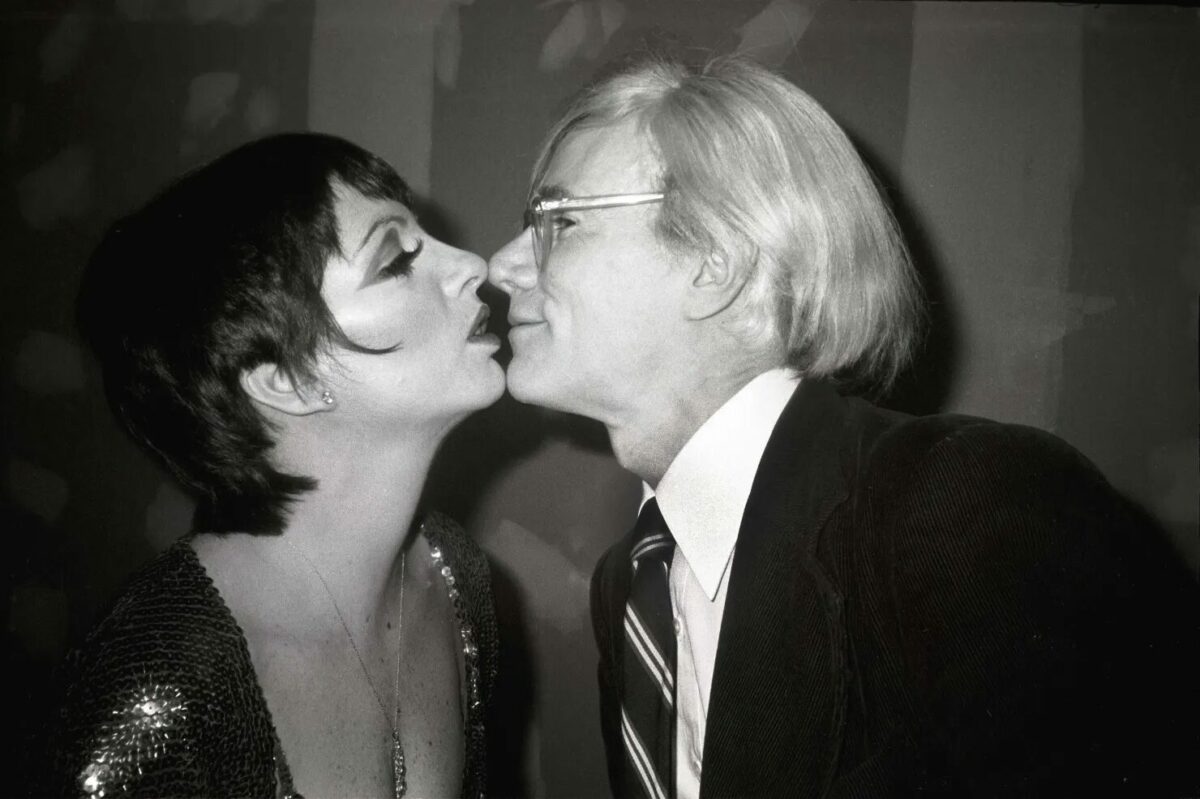
Liza Minnelli first met Andy Warhol when she arrived in New York in 1968. Warhol, who was well aware of her impressive theatrical presence and powerful alto-singing voice, wanted to paint her immediately. Born as a Hollywood child with actress mother Judy Garland and film director Vincente Minnelli, Liza knew that her life journey was bound for stardom due to her early stage presence. Following Liza’s achievement of getting a lead role in the iconic 1972 film Cabaret, Warhol assisted the young actress in celebrating by putting her on the cover of that year’s issue of Interview Magazine. Minnelli is featured on the cover posing in a black fedora with the iconic Mick-A-Matic instant camera.
The talented actress and singer went on to win the 1978 Tony Award for Actress of the Year in a Musical after her lead role in The Act. Warhol was sure to attend the musical premiere to show support for his friend. In a diary entry from October 29th, 1977, Andy writes: “We got to the theater and I’ve never seen a crowd that big, not for anyone, so many people. Liz Taylor and Halston sat behind us, Sammy Davis was in front of us with his wife, Altovise. Liza was on for the whole show. The Halston clothes were beautiful, they really were. I asked Halston to make me up a black sequined tuxedo with light blue shoes, too. It was so beautiful, the boy suit. Everything was sequins in all different colors.”
Certain staples of Liza’s physical appearance made her the perfect advocate for a striking Warhol portrait, which she eventually sat for at the Factory in February of 1978. After taking thirty-seven Polaroid photos of the young actress, Warhol selected an image where Liza was in a frontal pose. He painted eight portraits of Minnelli, accentuating her most noticeable features; her bluntly cut black bangs, large expressive eyes, and bright red and glossy lips. The following year, the white highlight added to Minnelli’s bottom lip became a staple in Andy’s female portraits.
Liza and Andy shared many memorable nights together at Studio 54, reveling in the disco lights with mutual friends like Halston, Bianca Jagger, and Elizabeth Taylor. Andy found artistic inspiration by observing his surroundings, and his ability to blend the domains of art, fashion, and celebrity culture is embodied in his interactions with Liza and their remarkable circle of friends. However, it is important to note that Warhol also not only drew inspiration from rising stars like Minelli, but also drew inspiration from classic stars he idolized early in his artistic career and befriended once he himself became an icon. One such friend was Elizabeth Taylor.
Elizabeth Taylor
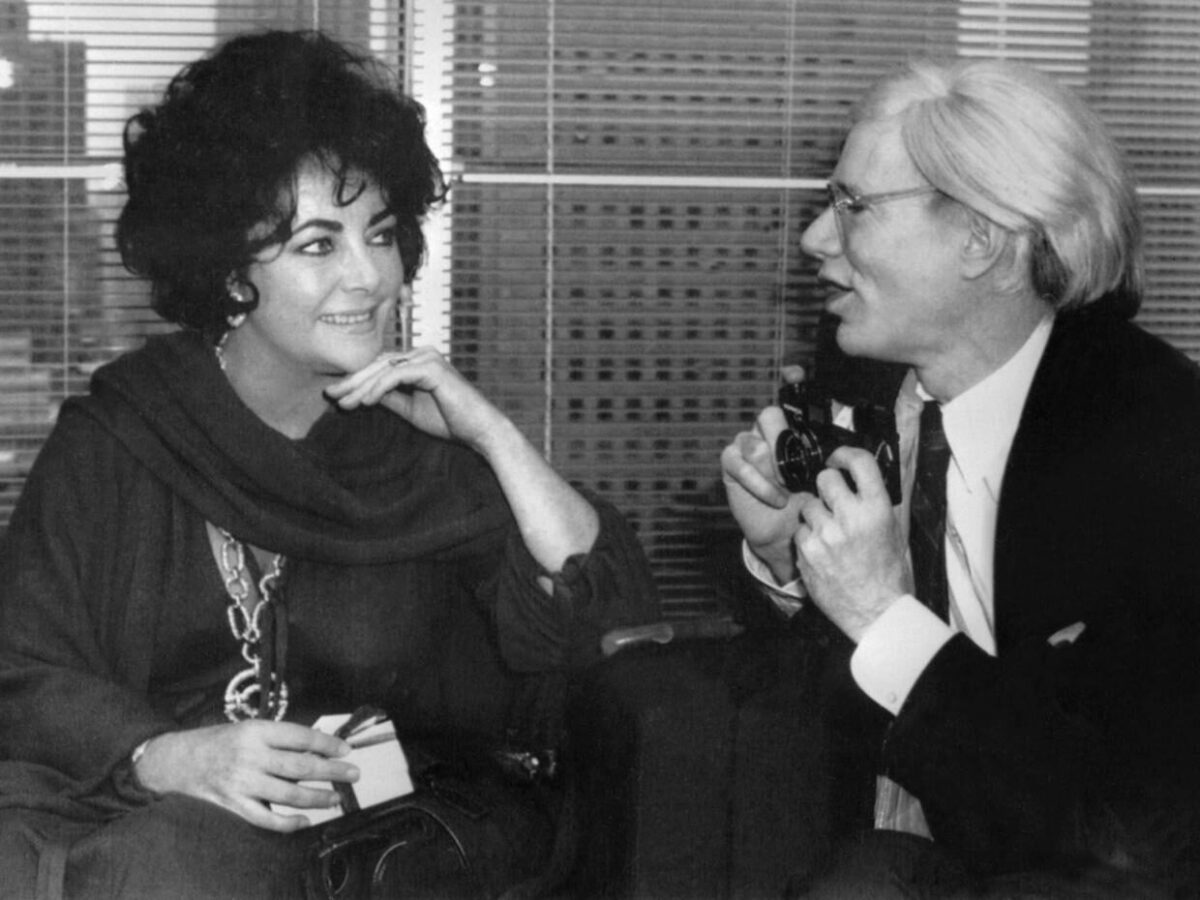
Before they officially met, Andy Warhol viewed Elizabeth Taylor as the epitome of Hollywood glamour. Hailed as one of the greatest movie stars of all time, Warhol idolized Taylor when he was an aspiring artist. Although they met and developed a friendship in the 70s, Warhol painted his first portrait of Taylor nearly a decade before. At the height of her career, Taylor was under intense media scrutiny while battling a serious case of pneumonia. This left her with a vulnerable public image, and Warhol saw in this an opportunity to highlight both her glamor and the fragile aspects of fame.
In the early 1960s, Andy’s artistic exploration of celebrity culture was gaining momentum. After creating famous works showcasing America’s increasing connection with mass production and consumerism, such as the Campbell Soup Cans and the Brillo Boxes, Warhol realized that well-known celebrities such as Liz Taylor could be viewed as brands through their depicted identities. In 1963, Andy Warhol painted a portrait of the actress based on a publicity photograph from her role in the film Butterfield 8.
Despite media criticism of Taylor’s physical condition, Warhol intended to highlight her glamour by using vibrant colors to accentuate her eyes and lips. Warhol took this portrait further by recreating the image in lithographs with different color combinations. From 1962 to 1965, Warhol built his Liz artwork series inspired by pictures of Taylor and her iconic cinematic roles. Before and throughout their friendship, Andy ultimately made over fifty works of Liz, whom he idolized for her resilience in living a glamorous yet challenging life under public scrutiny. The artist had once said, “It would be very glamorous to be reincarnated as a great big ring on Liz Taylor’s finger.”
One of Warhol’s most iconic screenprint portraits of Elizabeth Taylor is from 1962, featuring her dressed for her soon-to-be role as Cleopatra. The inspiration behind this silkscreen masterpiece comes from photos taken by LIFE Magazine, which used Taylor’s image dressed as an Egyptian goddess to highlight gossip about an alleged on-set affair with Richard Burton. In turn, Warhol illustrates Taylor as the epitome of Hollywood glamour. Warhol’s Liz series depicts the triumphs and lows of her life and acting career, following themes of fame, identity, vulnerability, and mortality, as if it were a cinema piece itself. Liz Taylor was not the only star that Warhol idolized early in his creative journey. He also had literary idols, bringing us to his storied friendship with Truman Capote.
Truman Capote
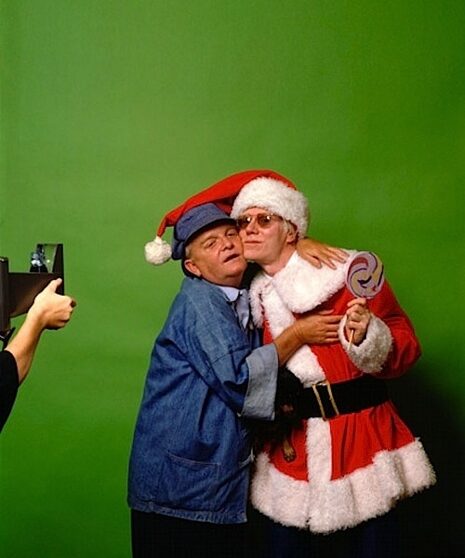
In retrospect, the friendship between the writer and the artist, both keen observers of American culture and society, might seem inevitable, but it wasn’t always apparent when Warhol was a young man starting out as a commercial illustrator in New York. Warhol had been a fan of Truman Capote and his writing for years. The pop artist’s first solo exhibition in 1952 was even titled 15 Drawings Based on the Writing of Truman Capote. Warhol was fascinated by Capote’s ability to push the boundaries of literature, particularly with his groundbreaking novels Breakfast at Tiffany’s and In Cold Blood. Capote quickly became a celebrated New York socialite, earning acclaim for both his literary talent and daring personality. The artist and writer eventually mingled within the same elite circles of New York while sharing comparable levels of fame. However, their awareness of each other began long before these social encounters.
In 1948, Truman Capote published his novel titled Other Voices, Other Rooms. Andy, a nineteen-year-old art student at the time, read the piece which marked the beginning of his obsession with Capote. The young artist saw reflections of his own struggles in the lives of Truman Capote’s characters and expressed his admiration through numerous letters. Capote quickly became familiar with his persistent young fan, receiving letters daily from Warhol. At one point, Capote even instructed his assistant to ask Warhol to cease the communication, but Warhol’s devotion never wavered. It wasn’t until Warhol began gaining recognition for an exhibition inspired by Capote’s work that the writer found himself truly impressed.
After Capote released Cold Blood in 1966, the famous writer threw a masquerade-themed ball to celebrate its success. While most attendees wore masks to match the theme, Warhol arrived bared-faced with eyes on the writer the entire night. The pair were formally introduced by Lee Radziwill, a sibling of Jackie Kennedy. Their first professional interaction took place in 1969 when Warhol traded portraits of Capone in exchange for a year’s worth of columns in Interview magazine, the perfect platform to capture discourse between famous celebrities. Their friendship undoubtedly blossomed over the years, and mutual friends even described them as acting like an ex-couple.
Many stories of Truman and Andy are found in Warhol’s diary, such as this entry from July 14, 1978: “Susan Blond sent a limo for Truman and me to go to the Palladium to see Rick Derringer and another act. They took us upstairs to a dressing room where we found a bottle of Jack Daniel’s and some milk and cookies, and Truman fixed himself a Jack Daniel’s with milk, and this rock and roll manager-type came in the room and started screaming, “Clear the room. Clear the room, we have to talk money.” So everybody left but us, we didn’t know where to go, and he said to Truman, “Didn’t you hear me say to clear the room?” And so I said, “But he’s Truman Capote,” and Truman said, “But he’s Andy Warhol.” And the manager said, “Oh, sorry.”
These interactions are also evident in Warhol’s eighty hours of recorded conversation with the writer, titled “Conversations with Capote.” This recorded dialogue not only illustrates the playful and humorous nature between Warhol and Capote but also records a variety of intellectual exchanges that define the societal impact of their relationship. Neither artist shied away from creating the unexpected, propelling them to the forefront of the avant-garde scene. Their embrace of shock culture was a staple of their success and societal influence, yet this pioneer spirit wasn’t confined to Warhol and Capote alone. Musicians of the era, such as Alice Cooper, were seeking to start something revolutionary in the performative world.
Alice Cooper
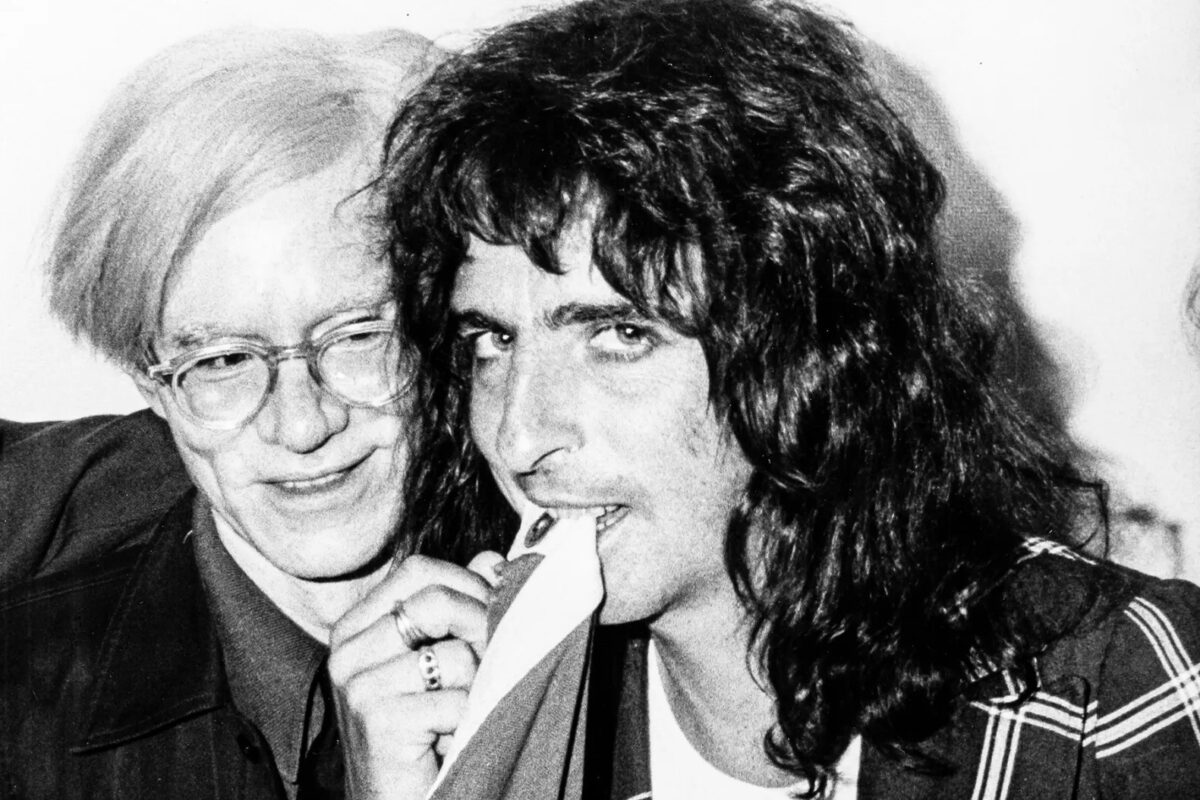
Andy Warhol and Alice Cooper became acquainted considering their frequent attendance to the same popular night scenes in New York during the early 1970s. Alice Cooper, the band, is hailed as a pioneer of the shock rock genre, combining innovative rock music sounds with dramatic and dark theatrics. Warhol and Cooper shared a similar fascination with finding innovative ways to express death and plasticity, and this connection is evident in their work. Warhol’s Death and Disaster artworks explored the media’s obsession with car accidents, suicides, contaminated food and execution equipment. Similarly, the Alice Cooper band was well known for utilizing macabre props during musical performances, including guillotines, pyrotechnics, snakes, fake blood, baby dolls, dueling swords, and even an electric chair—elements that captivated the the avant-garde artist.
The artist and musician first met in 1972 after Cooper first moved to New York with his girlfriend at the time, Cindy Lang. Frequently mingling within the same social circles at New York’s iconic Max’s Kansas City venue, Warhol and Cooper soon began collaborating on artistic ideas. Considering their mutual appreciation for dark topics, it is no surprise that some overlap in subject matter can be seen in their work. Andy attended an Alice Cooper concert shortly after meeting the band’s lead singer and was pleased to witness Cooper perform a stunt in an electric chair. While it is rumored that this was an inspiration for Warhol’s Electric Chair series, their mutual fascination for themes of mortality makes it possible that great minds simply think alike.
Cindy Lang, who worked in The Factory alongside Warhol at the time had purchased one of the Electric Chair silkscreen prints as a gift to Cooper for $2,500. The rocker was heavily inspired by the Surrealist art movement of the time led by the Prince of Pop himself, and it is clear he took this approach to the stage for years to come. In an interview with ArtNet, while touring in Mississippi in 2021, Alice Cooper shared his perspective on what it was like to be a part of the avant-garde scene of the 70s:
“When Cindy bought the silkscreen I was familiar with Warhol and had partied with his crew a few times. He was upfront about everything, including how anything could be art. This was a unique, in-your-face idea. Rock musicians and artists all hung out in the same circles and places, like Max’s Kansas City and Studio 54. The avant-garde always found each other, whether in music or art. I have an art major and always considered my stage show and persona an artistic extension of my music.”
This desire to formulate something new and unusual is evident in the work of Andy and Alice as both artists pushed boundaries and challenged audiences, creating a legacy that continues to inspire new generations. Warhol’s desire to eliminate the confines of visual art by combining artistic disciplines was not just appreciated by Cooper, as prominent figures such as Yoko Ono were to be a part of Warhol’s world.
Yoko Ono
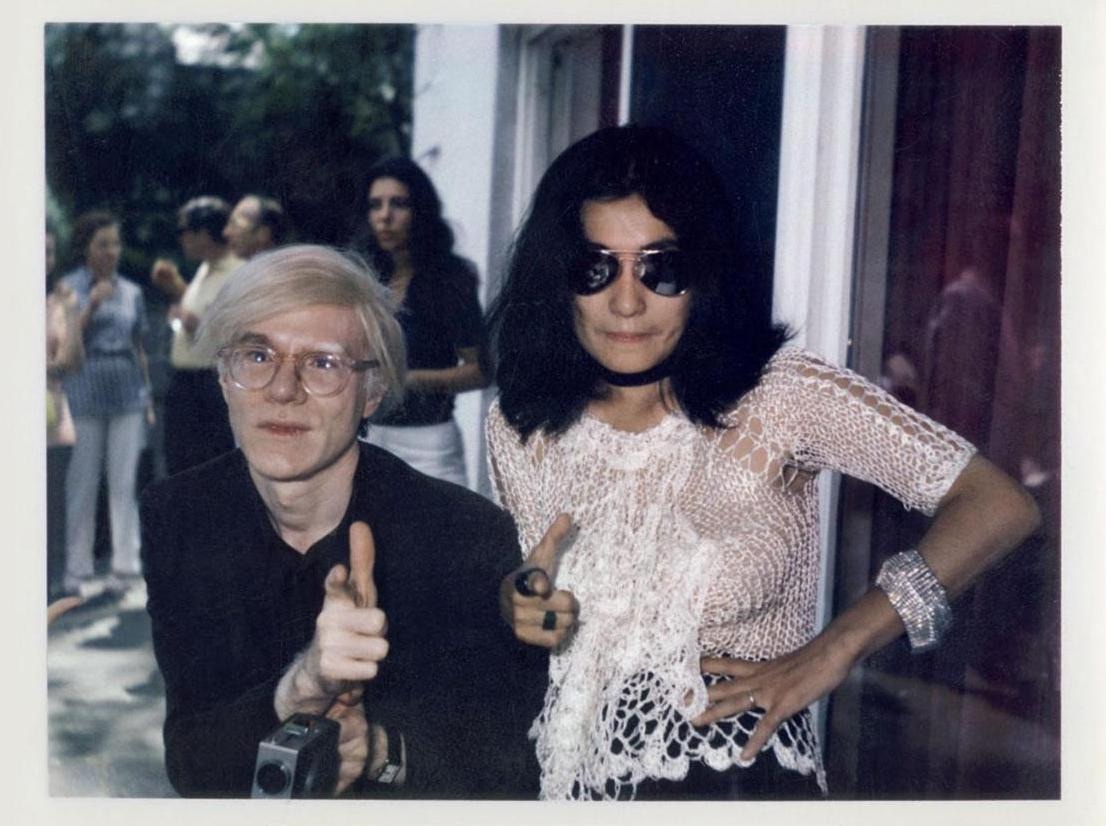
There is no doubt that Andy Warhol and Yoko Ono found themselves in the same avant-garde social scenes throughout the 1970s, but their friendship certainly bloomed through a mutual connection: John Lennon. Warhol and Lennon had been acquainted for a while before Yoko Ono, an established multimedia artist in her own right before becoming the wife of Lennon, joined the iconic trio. Despite all having different approaches to creating and redefining art, this element fueled their friendship and ultimately their collaborative ideas. With their mastery of both music and art, the artists inspired each other’s exploration of the interdisciplinary scope of art.
Many photographs and Polaroid shots are left today illustrating the fun atmosphere surrounding this creative trio with many shots showing close embraces and questionable groping. It was clear that the artist had a raw and transparent friendship. Warhol wrote about his experiences with Yoko in his journal countless times throughout the 70s and 80s, showcasing his appreciation for her presence in his life:
“We had to do our Rex Smith interview, Bob and I, so I decided it was easier to stay uptown because it was going to be at Quo Vadis. We fell in love with him. He had the curly Vitas Gerulaitis look but better looking. And then we heard a voice say, “Andy!” and it was Yoko Ono. We were so stunned. She looked so elegant, like the Duchess of Windsor with her hair back and dark wraparound glasses, and beautiful makeup and Fendi furs and jewelry—an emerald ring with a big ruby in it and Elsa Peretti diamond earrings. So I said that I wanted to call her for lunch and so she gave me her phone number. It was really strange, a whole new Yoko.” – Friday, March 20th, 1981
In 1986, John Lennon and Yoko collaborated on the album Menlove Ave, which was a collection of outtakes from recordings in the 1970s. Yoko Ono supervised the production of the album and enlisted their creative friend Warhol to design the cover. This cover features a classic Warhol-style portrait of Lennon, with applications of bold color and intricately traced facial lines. Lennon appreciated the artist’s application of creative simplicity to his music, which he was able to enjoy for a few more years before his unfortunate passing.
Yoko Ono has shared that Andy stepped in to serve as a mentor for their son, Sean Lennon. Their friendship remained strong until Warhol died in 1987, and Yoko Ono was invited to speak on his legacy at his memorial Mass. To the three thousand individuals who gathered to reflect on Andy’s life, Yoko offered a tribute to the Pop artist’s enduring influence:
“Someone said that Andy was a skyscraper and when he died the skyline of New York changed, but it hasn’t changed. Andy is still with us and he will always be.”
–
Andy Warhol’s friendships were as eclectic and vivid as his art. Through his connections we can trace a fascinating pattern of mutual admiration and collaboration. Warhol was fascinated with celebrity and had his share of famous friends, but his ability to draw them into his orbit testified to his genuine curiosity and appreciation for their creativity and originality. Warhol’s relationships were rooted in a blend of artistic symbiosis and personal warmth. His friendships were often platforms for mutual promotion, with Warhol elevating his friends’ public personas through his art and connections, while they, in turn, fueled his inspiration. Through these friendships, Warhol’s legacy as a transformative figure in art and culture continues to endure.


